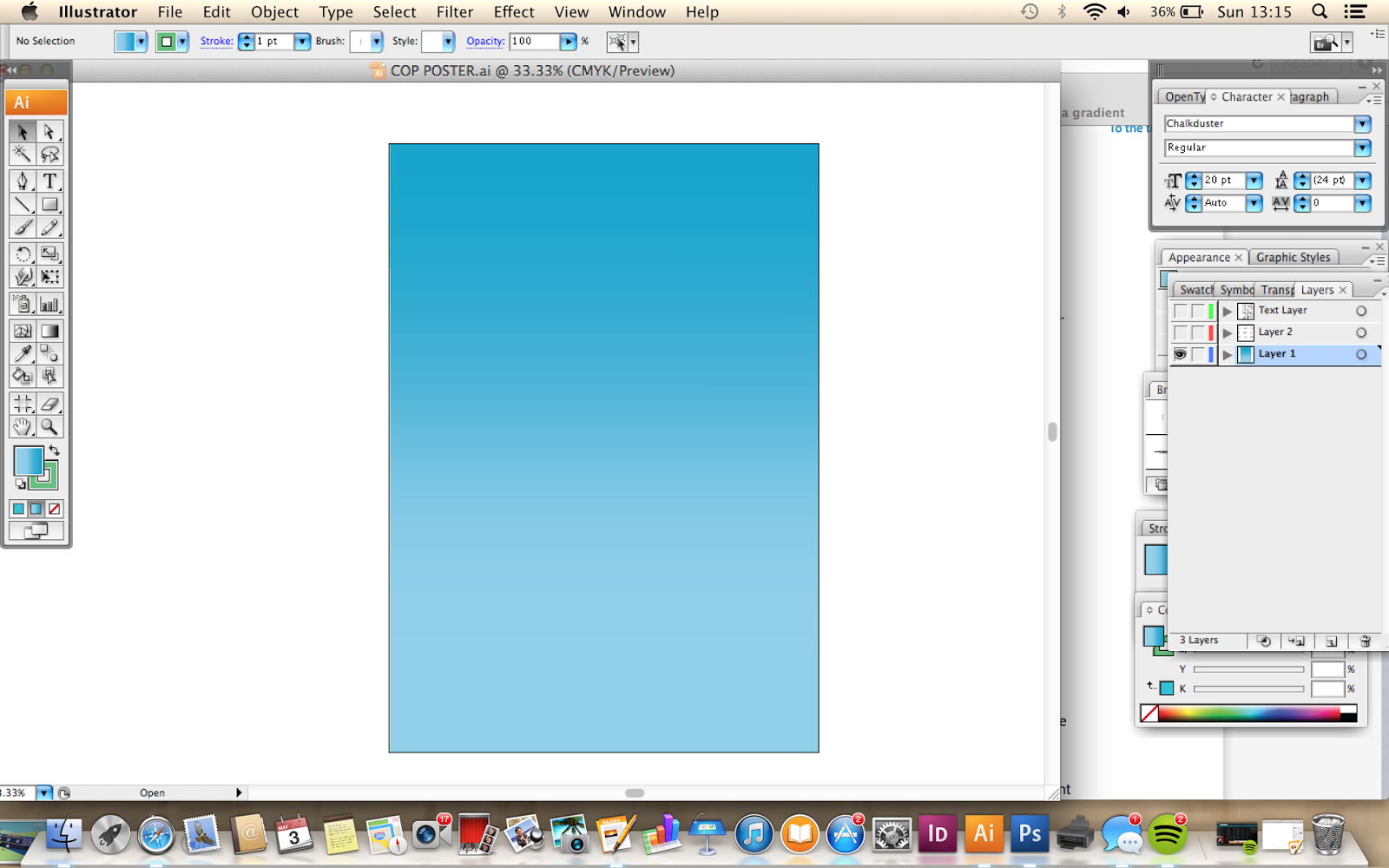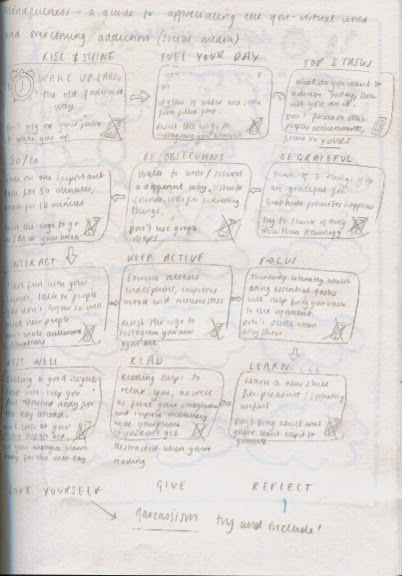I have learnt how to look deeper into the meaning of an image or article through discourse analysis with the use of referencing. Taking apart an image relating to my subject in this way has taught me to unpick all of the themes, questions and intentions surrounding the image, ultimately increasing my interest and understanding. This has helped me to gain a stronger ability to find a solution to a problem through research by being more speculative towards the initial issue. I have also developed my presentational skills through delivering a pecha kucha presentation with restricted limits on time, which has allowed me to pick out the most important points that I want to get across to my audience with more efficiency.
2. What approaches to/methods of research have you developed and how have they informed your practical outcomes?
I have used the library to gain academic references to my subject, which has also allowed me to read further into the context and history of social media and technology. Because both areas of development are so widely accessible, I was able to analyse other peoples interaction on a daily basis, as well as carry out my own experiments to test my ability to resist using social media, learning and reflecting from it. Experience based learning helped me to develop and understand why it was that people can become so addicted to using technology and social media, and I used these habits triggers to come up with a positive alternative solution through my visual diagram.
3. What strengths can you identify in your work and how have/will you capitalise on these in the future?
I think that I have put across my points in my essay in a balanced way, with a good structure and wide spectrum of questions surrounding the issue. Also, over the course of this module I have become really interested and passionate about the way that social media and technology have negatively impacted society and I have become enthusiastic towards raising awareness about the problems that it can cause, which is evident in my visual diagram. I have made sure that my visual diagram focused on mindfulness is really informative and highlights the negative habits that come from using social media too much, and suggested a positive alternative, that if practised enough will help improve the viewer’s day, and ultimately their wellbeing. I will capitalise on these points by continuing to be speculative towards my question title, and look at it with a balanced view to avoid my research being too personal and biased.
4. What weaknesses can you identify in your work and how will you address these in the future?
My biggest weakness is that my Pecha Kucha wasn't as efficient as it could have been, in the way that I didn’t address a solution to the problem within the presentation, and didn’t directly get to the point in the way that I’d hoped it would. At the beginning I focused a lot on the history of the development of technology and social media in general, rather than starting at the beginning of MY understanding of the issue, by including the initial stages of research, books I read etc. In the future, I will definitely ensure that I address the problem clearly, AND address possible solutions, rather than leaving it at an open end.
5. Identify five things that will benefit you in next years CoP module:
- Choose more of a QUESTION to study, rather than an open ended statement, this way I will really be able to sink my teeth into it and gain more interesting results.
- Push myself out of my comfort zone to gain more speculative, and more experience based research.
- Read more journals, newspapers, books in general to improve my language and vocabulary.
- Express myself visually about how I feel about my subject- produce more sketchbook drawings to amplify my thoughts, to help improve my understanding.
- Allow more time in my timetable to develop my COP work, rather than leaving it on the back burner.
6. How would you grade yourself in the following areas:
Attendance:4
Punctuality:5
Motivation:3
Commitment:3
Quantity of work produced:3
Quality of work produced:4
Contribution to the group:3
























